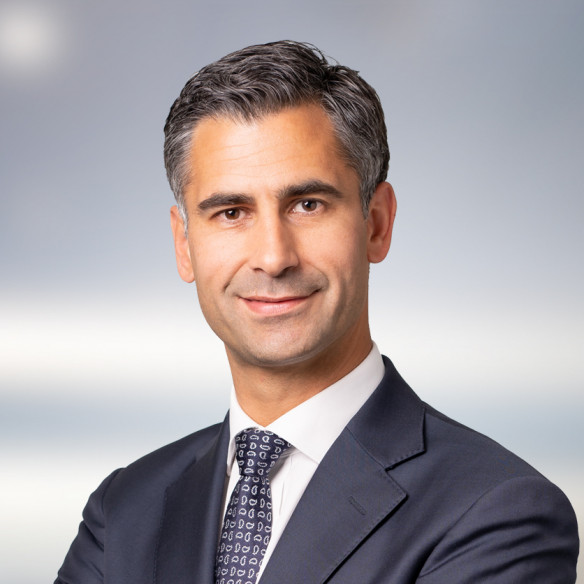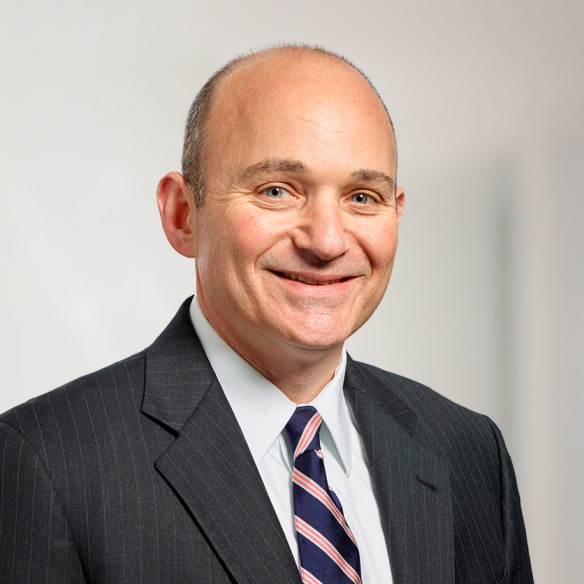Pent up dry powder? Biggest emerging secondaries sectors? Leverage still a viable means to finance deals? Below is a “sneak peek” into what our Proskauer panelists have to say on these big topics. They, along with our lineup of special guests, will deep dive these questions as well as many others throughout the day of the event.
Secondaries has a lot of dry powder to spend. When will we see that big tsunami of deals expected?
Dedicated secondary programs continue to raise significant amounts of dry powder, but that doesn’t necessarily result in deals being done unless the buyers and sellers can agree on pricing. The first quarter of 2023 was a “yellow light” environment, where secondary bids and asks came further into alignment in certain sectors such as buyout, but continued global market volatility still created some headwinds. For the second half of 2023, I think the general expectation is that we will continue to see buyer and seller spreads come closer together, which will cause sellers to jump back in from the sidelines and start clearing the pipeline in a meaningful way. The significant caveat is that continued macroeconomic disruption or other shocks to the system, similar to the bank defaults from earlier in the year, could inject additional uncertainty on pricing and push the anticipated “tsunami” further down the line.
Mike Suppappola, Private Funds, Boston
In a context of sharp interest rates increases is leverage still viable to finance secondary acquisitions?
Through 2022 and early 2023 we have observed a sharp increase of recourse to seller loans in LP portofolio secondaries in order to reduce the bid-ask gap. Many times this structuring has allowed portfolio sales to complete, if not entirely at least on sub-portions of LP portfolios. In a context of steady interest hikes by all major central banks around the world this structuring has provided secondary buyers access to “free interest rate” financings and therefore reduced their recourse to more costly third-party lender financings. But what we are now seeing is a significant shift back to third-party lender financings, and this in spite of interest rates being higher than what they used to. Those rates are still seen by major secondaries buyers as inferior to their cost of capital (and preferred returns to their LPs) and therefore useful to achieve greater returns to their LPs. There are large LP portoflio sales being shopped and third-party leverage, as well as syndication, are used to ensure their underwriting.
Bruno Bertrand-Delfau, Private Funds, London
We’ve seen several secondaries firms raise funds nearing or exceeding $20 billion over the past few years – will secondary fundraising continue at this pace or are there any headwinds on the horizon?
Although the fundraising environment remains challenging, overall secondary fundraising should remain healthy. Secondaries remain an attractive strategy – we are seeing a rebound in LP-led volumes, with supply driven by investors’ increasing need for liquidity, and GP-led transactions will continue to increase in popularity.
Sponsors raising secondary funds at or around the USD 20 billion mark are small in number, resulting in a concentration of dry powder. I expect we will see smaller secondary funds being raised by other sponsors, including new entrants to the market and sponsors raising capital dedicated to specific parts of the market, such as GP-led transactions, infrastructure, credit and real estate.
Warren Allan, Private Funds, London
We’ve seen a number of larger financial institutions acquire secondary teams in recent years – do you believe this trend will continue?
Yes. As the GP Led secondary market has expanded, financial institutions have recognized that continuation funds and other structured solutions are valuable tools for Fund sponsors looking to provide investors liquidity and provide valuable alternatives to traditionally exit opportunities so it is natural that financially institutions are looking to acquire and/or build experienced secondaries teams to provide these alternatives to their clients.
Howard Beber, Private Funds, Boston
Have you seen any recent shifts or trends in the GP-led secondary market over the past few months?
As the market for GP-led continuation funds continues to mature, there have been some notable key shifts and trends in recent months. We are seeing increased downward pressure on management fees as well as mounting scrutiny on rationale for the deal from existing LPs. This is coupled with a divergence between the U.S. and Europe on the basic framework for GP-led secondary transactions and given the current fundraising headwinds, increasing focus on stapled primary commitments to new funds. Lastly, the ILPA guidelines have recently been published. While the impact of the guidelines will have on GP-led secondary transactions remains to be seen, they will play a role in shaping transactions going forward.
Nigel van Zyl, Private Funds, London
Has the recent financial turmoil led to changes in the legal terms of secondaries?
A key issue seen in the secondaries market has been widening bid-ask spreads, largely triggered by the decline in public market valuations. This has resulted in an increasing number of buyers including a purchase price deferral and/or obtaining third party leverage, as a means to overcome such disparity, which has an impact on the legal terms being negotiated across a number of the transaction documents. In particular, a seller will seek a number of protections from the buyer during the deferral period and lenders will require certain consents from the underlying GPs with regard to its security package and ongoing reporting requirements.
Jordan Hurwitz, Private Funds, London
How can buyers best position themselves as it relates to competitive processes where headline pricing is a material consideration of the seller?
When pricing is a material consideration there are a couple of things that a buyer can do to best position itself with a seller. We are seeing buyers offering better pricing if there is a purchase price deferral and are also seeing longer deferral on average. Limiting a bid to a subset of o portfolio can also allow a buyer to offer an optimised price on such subset. But fundamentals such as being able to assure the seller that the buyer is in a superior position to close efficiently and transfer the whole portfolio being sold in the desired time frame are always compelling. Here, being able to point to the buyer’s experience, relationships with GPs and professional teams can emphasize that the buyer is the safest pair of hands without execution risk.
Niamh Curry, Private Funds, New York
What are the key tax considerations for limited partners in GP-led secondary deals?
Although price is usually top of mind, a deeper analysis of the proposed transaction may be worthwhile. For example, if there are “blockers” or other special structures, significant value could be eroded for investors in those structures. For cross-border matters, the tax laws of each relevant jurisdiction must be analyzed to identify any tax leakages (or potential credits available in respect of those leakages), and any potential tax withholding should be identified upfront to avoid surprises.
Stephen Severo, Tax, Boston
How have recent tax law changes affected GPs in the secondary market?
Beginning with transfers of interests effective January 1, 2023, GPs now are subject to a requirement to withhold on distributions to a transferee of a fund interest where the transferee did not properly withhold US tax on the transfer where it was required to do so. As a result, GPs would be prudent to ensure before approving any given transfer, that the transferring parties have complied with these obligations.
Jeremy Naylor, Tax, Boston
What is the biggest regulatory shift affecting secondaries that GPs need to be aware of?
Risks to GPs from the SEC’s longstanding focus on conflicts of interest in GP-led secondaries transactions will likely be magnified by several recent converging developments. Recent amendments to Form PF will soon give the SEC regular notice of many transactions, thereby enabling targeted – and prompt – examination focus. The Marketing Rule amendments also create new tools for the SEC where they view CIMs and other materials as misleading. And with declining market prices driving SEC focus on valuation, GPs can expect more SEC scrutiny on any changes to valuation practices. All raising the stakes on getting it right when running a transaction.
Robert Sutton, Private Funds, New York











